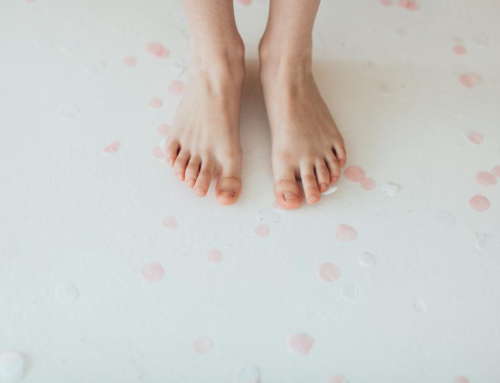Risk factors for nail fungus can be easy to see. Nail fungus is fairly common and anyone can catch it. Although, certain things make you more prone to nail fungus than others. In today’s blog post, we will explore some of the risk factors that make you more susceptible to nail fungus.
Who is at risk?
Nail fungus tends to be very common in older people. While only 10% of the general population have nail fungus, this proportion doubles over the age of 60, and 50% of seniors over 70 have nail fungus! The reason for this is that with old age comes reduced blood flow to the peripheral limbs and lower immunity, and since nail growth slows down as well, these factors combined result in higher susceptibility.
Others are prone to nail fungus due to pre-existing health conditions. If you have diabetes, this also means that you have reduced blood flow in the feet and possible nerve damage. When you have nerve damage, you are not able to notice injuries or wounds on your toes that provide an entry site for nail fungus to infect and thrive. This is why diabetics need to be extra diligent about foot health. If you have a skin condition such as psoriasis that causes constant skin peeling or cuts, this also provides a site of exposure for nail fungus. Others still may have an athlete’s foot, which ends up spreading from the skin of the foot to the nail bed and ultimately the nail.
Activities that put you at risk
Another risk factor for nail fungus comes from lifestyle. Nail fungus is especially prevalent in athletes due to the fact that they are constantly experiencing trauma to their feet and toes. When this happens, the nail may crack, providing an opening for the nail fungus to grow on the nail bed. This is especially true for soccer players since they are kicking the ball with their feet. Swimmers are also at risk since they are around public pools and their feet are wet more often than the average person.
Laser Treatment for Nail Fungus
If you have caught nail fungus, it can be easily treated using the FDA-approved PinPointe laser, which typically only takes on treatment. Other treatments like topical solutions and oral medication are not as effective. Topical solutions have a very low cure rate. This is because the solution does not penetrate all the way through the nail bed. This is because it can lead to liver toxicity. You would need to have consistent blood tests throughout the course of taking the medication.
Our nail doctor in Baltimore, MD recommends this treatment for Toenail Fungus. The PinPointe Laser treatment has the highest cure rate in the market. It has no side effects and no recovery period. As a result, you can go about your daily activities right after the treatment. Also, there’s no pain.
If you have any signs of nail fungus, call us at (800) 672-0625 or visit our website for more information on our doctors at one of our over 150 locations.



